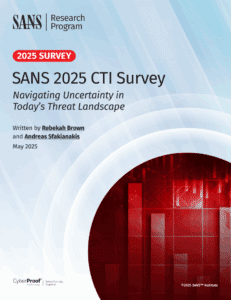In today’s interconnected digital landscape, businesses are increasingly migrating to cloud environments to benefit from scalability, flexibility, and cost-efficiency. However, with this shift comes a new set of challenges, primarily revolving around safeguarding data and ensuring robust cloud security monitoring. This article dives into top vulnerabilities in the cloud and actionable strategies to address them using cutting-edge tools and best practices.
Top Cloud Vulnerabilities and How to Address Them
Cloud environments provide businesses with flexibility, scalability, and cost-efficiency, but they also come with unique security challenges. Effective cloud security monitoring is essential to detect and address vulnerabilities proactively. Below are the most significant risks cloud-based organizations face and actionable steps to mitigate them.
1. Misconfigured Cloud Settings
Misconfigurations are one of the most prevalent causes of cloud security breaches. Examples include leaving storage buckets publicly accessible, failing to encrypt sensitive data, or not enforcing strict role-based access controls. These missteps often result in exposing sensitive data to unauthorized access, leading to financial losses, legal liabilities, and reputational damage.
Solution:
- Implement Cloud Security Posture Management (CSPM) tools to identify and rectify misconfigurations in real time.
- Establish automated alerts to detect anomalous activities such as unauthorized access or changes to critical configurations.
- Enforce secure defaults for newly deployed resources, ensuring that they comply with the organization’s security policies.
2. Insufficient Identity and Access Management (IAM)
Weak or improperly configured IAM policies are a significant threat to cloud security. Compromised credentials, overly broad access permissions, and a lack of robust authentication mechanisms can result in unauthorized access to sensitive resources.
Solution:
- Enforce strong password policies across the organization and implement multi-factor authentication (MFA) to add an extra layer of security.
- Regularly review access permissions and ensure users only have the privileges necessary to perform their roles, adhering to the principle of least privilege.
- Deploy IAM tools that monitor login activities, detect suspicious behavior, and immediately alert administrators.
3. Lack of Visibility Across Cloud Assets
Many organizations struggle to maintain visibility in multi-cloud environments, where resources are spread across different platforms. Without centralized visibility, monitoring and securing cloud assets becomes a daunting task.
Solution:
- Use centralized cloud security monitoring solutions capable of integrating with multiple cloud providers. These solutions provide a unified view of cloud activity, making it easier to detect and respond to threats.
- Leverage tools that aggregate logs, generate real-time dashboards, and provide actionable insights to security teams.
4. Insecure APIs and Interfaces
APIs are a critical component of cloud ecosystems, enabling communication between services. However, poorly secured APIs are vulnerable to attacks such as injection attacks, unauthorized access, and data exposure.
Solution:
- Adopt API gateways that offer built-in security features, including rate limiting, authentication, and encryption to reduce risk.
- Continuously monitor API activity for anomalies and implement secure coding practices to minimize vulnerabilities.
For expert assistance in navigating these vulnerabilities and implementing advanced cloud security monitoring solutions, visit CyberProof.
Use Monitoring Tools Like CSPM (Cloud Security Posture Management)
Cloud Security Posture Management (CSPM) tools are vital for businesses aiming to strengthen their cloud security monitoring. These tools provide a comprehensive view of cloud environments, continuously scanning for misconfigurations, compliance gaps, and security vulnerabilities. By automating critical monitoring tasks, CSPM tools improve the efficiency and effectiveness of cloud security operations.
Key Features of CSPM Tools
- Automated Monitoring: CSPM tools deliver real-time insights into cloud infrastructure, identifying vulnerabilities and misconfigurations before they escalate into significant issues. Automation enables organizations to respond swiftly to potential threats, reducing the likelihood of breaches.
- Compliance Management: CSPM solutions ensure alignment with regulatory requirements and industry standards such as GDPR, HIPAA, and SOC 2. These tools provide continuous compliance checks, helping organizations avoid penalties and maintain trust.
- Anomaly Detection: Advanced CSPM tools leverage AI-driven insights to detect unusual activity patterns, such as unauthorized access attempts or suspicious configuration changes. This enables rapid remediation and minimizes potential damage.
Popular CSPM Tools
Tools like Wiz CNAPP, Prisma Cloud, and Microsoft Defender for Cloud offer robust features tailored to meet diverse organizational needs. These solutions enable businesses to proactively secure their cloud environments, reduce risks, and maintain compliance with ease. For organizations looking to optimize their cloud security posture, CSPM tools offer a scalable, efficient, and reliable way to ensure continuous monitoring and protection of cloud assets.
Implement Identity and Access Management (IAM) Best Practices
Strong Identity and Access Management (IAM) policies are foundational to maintaining secure cloud environments. Properly managing user identities, permissions, and authentication methods can significantly reduce the risk of breaches and prevent unauthorized access to sensitive resources.
IAM Best Practices
- Enforce Multi-Factor Authentication (MFA): MFA adds an extra layer of security by requiring users to verify their identity through multiple methods, such as passwords, biometrics, or one-time codes. This helps mitigate risks associated with compromised credentials and ensures only authorized users access critical systems.
- Adopt Role-Based Access Control (RBAC): RBAC simplifies access management by assigning permissions based on predefined roles rather than individuals. This approach ensures users only have access to the resources necessary for their responsibilities, adhering to the principle of least privilege.
- Monitor and Audit Access Logs: Regularly reviewing access logs helps identify anomalies, such as unauthorized login attempts or unusual patterns, and ensures compliance with security protocols. Proactive monitoring allows organizations to respond quickly to potential threats.
Implementing robust IAM policies strengthens cloud security monitoring by providing better control and visibility over user activities, reducing the risk of data breaches, and fostering a secure, compliant cloud environment.
Encrypt Sensitive Data and Enforce Data Loss Prevention Policies
Data breaches remain one of the most critical threats to cloud environments, underscoring the need for robust protection mechanisms. Implementing encryption and Data Loss Prevention (DLP) policies is vital for safeguarding sensitive information, maintaining customer trust, and ensuring compliance with regulatory requirements.
Encryption Best Practices
- End-to-End Encryption: Encrypt sensitive data at rest and in transit to protect it from unauthorized access during storage and transmission. Encryption ensures that even if data is intercepted, it remains unreadable to unauthorized parties.
- Regularly Update Encryption Protocols: Stay ahead of emerging threats by using current encryption standards, such as AES-256, and deprecating outdated algorithms to maintain the integrity of your security measures.
- Secure Encryption Keys: Protect encryption keys using hardware security modules (HSMs) or other secure key management systems to prevent unauthorized access or misuse.
Enforcing DLP Policies
- Monitor File-Sharing Activities: Continuously track how sensitive data is accessed and shared to identify unauthorized transfers and prevent data leaks.
- Block Unauthorized Uploads: Implement policies that restrict uploads of sensitive files to unapproved cloud storage platforms, reducing exposure risks.
- Integrate DLP with Cloud Security Monitoring: Use advanced tools that combine cloud security monitoring with DLP capabilities to detect and prevent real-time data exfiltration or misuse.
By adopting these encryption and DLP strategies, organizations can effectively safeguard their critical assets, mitigate risks, and ensure a secure and compliant cloud environment. This proactive approach protects sensitive data while fostering trust and operational resilience.
Continuously Audit Cloud Configurations for Compliance
In today’s dynamic regulatory landscape, maintaining compliance is a constant challenge for businesses operating in cloud environments. Ensuring cloud configurations align with security frameworks requires regular audits and proactive management. These efforts are critical to avoiding penalties, maintaining stakeholder trust, and safeguarding sensitive data.
Steps to Continuous Auditing
- Use Automated Compliance Tools: Automated tools like AWS Audit Manager and Azure Policy simplify compliance checks by continuously assessing your cloud environment against industry standards such as GDPR, HIPAA, and SOC 2. These tools reduce manual efforts, enhance accuracy, and provide real-time insights into compliance status.
- Track Changes in Real-Time: Configuration drift, where settings deviate from approved policies, can create vulnerabilities. Continuous monitoring tools detect and alert administrators to unauthorized changes or deviations, enabling immediate remediation. This ensures your cloud environment remains compliant and secure.
- Leverage External Expertise: Partnering with a Managed Security Service Provider (MSSP) provides access to specialized knowledge and resources. MSSPs offer tailored compliance solutions, real-time monitoring, and expert guidance to help navigate complex regulatory environments effectively.
By adopting these continuous auditing practices, organizations can proactively address compliance challenges while reinforcing cloud security monitoring. This approach not only strengthens security but also fosters operational resilience and regulatory adherence, ensuring a secure and compliant cloud infrastructure that evolves with industry standards.
Conclusion
As businesses continue adopting cloud technologies, ensuring robust cloud security monitoring is paramount to safeguarding sensitive data and maintaining operational integrity. By addressing vulnerabilities, utilizing advanced tools like CSPM, and adhering to best practices in IAM, encryption, and compliance auditing, organizations can minimize risks and achieve resilient cloud infrastructures. For expert assistance in enhancing your cloud security posture, visit CyberProof and explore tailored solutions designed to protect your digital assets.
FAQ
What is cloud security monitoring, and why is it important?
Cloud security monitoring involves using tools and processes to continuously track and assess the security posture of cloud environments. It helps identify and mitigate risks like misconfigurations, unauthorized access, and data breaches in real time.
What are CSPM tools, and how do they work?
Cloud Security Posture Management (CSPM) tools automate the process of scanning cloud environments for vulnerabilities, misconfigurations, and compliance gaps. They provide real-time insights, detect anomalies, and ensure adherence to regulatory standards like GDPR and HIPAA.
How does multi-factor authentication (MFA) improve cloud security?
MFA strengthens security by requiring users to verify their identity using multiple factors, such as passwords and one-time codes. This additional layer makes it harder for attackers to gain unauthorized access, even if credentials are compromised.
What are the key benefits of data encryption in the cloud?
Encryption protects sensitive data by converting it into an unreadable format, ensuring security during storage and transmission. It mitigates risks of data breaches and helps organizations comply with regulatory standards.
Why is continuous auditing critical for cloud compliance?
Continuous auditing ensures that cloud configurations align with evolving security frameworks and industry standards. It helps detect configuration drift, avoid penalties, and maintain a secure, compliant cloud environment.













